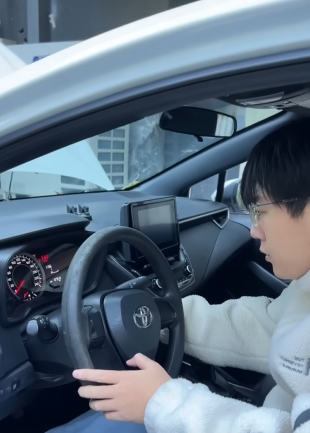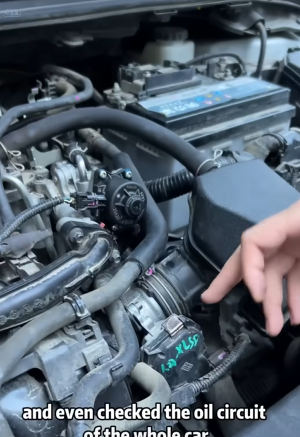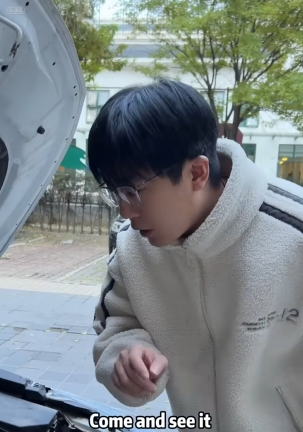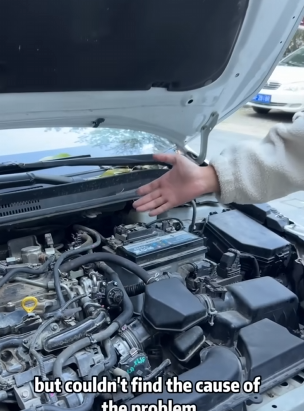
There’s nothing quite as frustrating as getting into your car, turning the key or pressing the ignition button, and realizing the engine won’t start. Whether you’re in a rush to get to work or simply trying to run errands, a car that refuses to start can throw your whole day off. Fortunately, most causes behind a non-starting car are common and often fixable, especially if you know what to look for.
In this guide, we’ll walk you through the most frequent reasons why your car might not start, how to diagnose the problem, and what solutions might get you back on the road quickly.

1. Check the Battery First
One of the most common reasons a car won’t start is a dead or weak battery. If you hear a clicking sound or the dashboard lights are dim, your battery could be the culprit.
Signs of a dead battery:
- No lights on the dashboard
- Clicking sound when turning the key
- The engine doesn’t crank at all
- Car was previously sitting unused for several days
Solutions:
- Jump-start the car: Use jumper cables and another vehicle with a healthy battery.
- Replace the battery: If jump-starting works but the car won’t start again later, your battery may be too old or damaged.
- Clean the terminals: Corrosion can prevent a solid connection; clean the terminals with a wire brush.
Tip: Always turn off lights and unplug any accessories to prevent draining the battery unnecessarily.
2. Inspect the Starter Motor
The starter motor is what turns your engine over when you try to start the car. If it fails, your car won’t start even if the battery is fully charged.
Symptoms of starter problems:
- A single click when turning the key
- No sound at all when attempting to start
- Lights and electronics work fine, but engine won’t crank
Solutions:
- Tap the starter: Sometimes gently tapping the starter motor with a wrench or hammer can temporarily free it.
- Replace the starter: If it’s completely dead, it’ll need replacing.
- Check connections: Loose or corroded starter wires can prevent it from functioning.

3. Test the Ignition Switch
A faulty ignition switch can prevent the car from recognizing that you’re trying to start it. This is often overlooked but can be a source of trouble.
Signs of ignition switch failure:
- No dashboard lights when the key is turned
- Intermittent power loss
- Engine doesn’t respond to the key or button
Solutions:
- Wiggle the key: Sometimes a worn key or ignition can fail to make proper contact.
- Try a spare key: If your key is worn or damaged, the spare may work better.
- Have the switch tested: A mechanic can use diagnostic tools to confirm if the switch is failing.
4. Fuel System Issues
Even with a strong battery and functioning starter, your car won’t start if it’s not getting fuel. Problems in the fuel system can range from an empty tank to a failed fuel pump.
Symptoms of fuel system issues:
- Engine cranks but doesn’t start
- No sound from the fuel pump when you turn the key
- Smell of gasoline without the engine running
Solutions:
- Check the fuel level: It might seem obvious, but running out of gas happens more often than people admit.
- Listen for the fuel pump: When you turn the key to the “on” position, you should hear a faint whirring sound.
- Replace the fuel filter or pump: If fuel isn’t reaching the engine, either the filter is clogged or the pump is dead.

5. Examine the Fuses and Relays
A blown fuse or faulty relay in your car’s electrical system can prevent it from starting. Thankfully, this is often a quick fix.
Signs of electrical issues:
- Sudden failure of key systems (like fuel or ignition)
- No cranking or response when turning the key
Solutions:
- Check the fuse box: Most cars have fuse boxes under the dashboard and under the hood.
- Replace blown fuses: Always use the correct amp rating when replacing a fuse.
- Swap relays: If you suspect a bad relay, you can often swap it with another similar one temporarily.
6. Security System Malfunctions
Modern cars come with anti-theft systems that sometimes backfire. If the immobilizer doesn’t recognize your key or key fob, it may prevent the engine from starting.
Signs of security system problems:
- Flashing security light on the dashboard
- Car starts for a second then shuts off
- No response to the ignition
Solutions:
- Try a different key: If you have a spare, test it.
- Reset the system: Many cars can be reset by locking/unlocking the doors or inserting the key in a specific sequence.
- Check the battery in the key fob: A dead fob battery may stop the immobilizer from identifying the key.

7. Transmission or Clutch Issues
For automatic transmissions, the gear needs to be in ‘Park’ or ‘Neutral’ to start. For manual cars, the clutch must be fully pressed.
Symptoms:
- No response when turning the key
- Engine won’t start unless gear is in a specific position
Solutions:
- Try shifting gears: Put the car in ‘Neutral’ and try again.
- Depress the clutch fully: For manual transmissions, make sure you push the clutch pedal all the way.
- Check the gear selector switch: If faulty, it may incorrectly signal the wrong gear position.
8. Check for Engine Flooding
This mostly applies to older cars, but it’s still possible in modern vehicles.
Symptoms of a flooded engine:
- Strong smell of gasoline
- Engine cranks but doesn’t start
- May occur after repeated unsuccessful start attempts
Solutions:
- Wait it out: Let the car sit for 10–15 minutes, then try again with the gas pedal held to the floor (clear flood mode).
- Replace spark plugs: If they’re soaked in fuel, the engine won’t ignite.

9. Call for Professional Help
If you’ve gone through all the above steps and your car still won’t start, it’s time to call a mechanic or roadside assistance. Modern cars are complex, and sometimes computer diagnostics are needed to pinpoint the issue.
Conclusion
A car that won’t start can be caused by many different issues, ranging from simple to complex. By checking the battery, starter, fuel system, ignition switch, and other key components, you can often diagnose and fix the problem yourself—or at least narrow it down before calling for help.
The next time you’re faced with a stubborn engine, remember to stay calm, go through the steps methodically, and don’t hesitate to seek expert assistance if needed. A little knowledge can save you time, money, and a whole lot of frustration.



